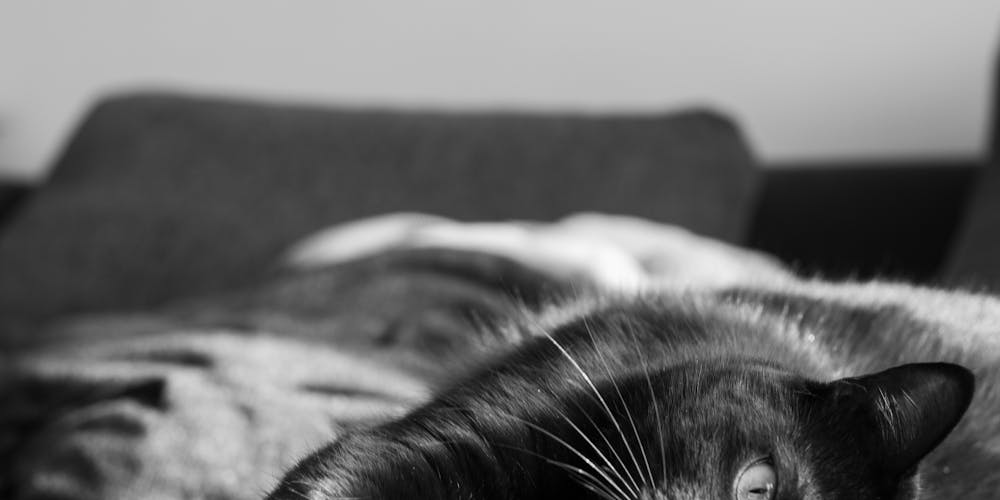Do you have a furry feline friend that loves to scratch on your furniture? Or perhaps your cat's claws are starting to become too long and sharp, causing discomfort for both you and your pet. Trimming your cat's claws is an essential part of their grooming routine and can help prevent any unwanted scratching incidents. However, the thought of trimming your cat's claws may seem daunting and challenging, especially if you've never done it before. But fear not, with the right techniques and tools, you can easily trim your cat's claws at home without any hassle. In this guide, we will discuss everything you need to know about trimming your cat's claws safely and effectively.
1. Why You Should Trim Your Cat's Claws
Subheading 1: The Importance of Trimming Your Cat's Claws
Cats are natural-born predators, equipped with sharp claws to help them hunt and defend themselves. However, in a domestic setting, these sharp claws can become a nuisance, causing damage to furniture, carpets, and even skin. Regularly trimming your cat's claws can help reduce the damage caused by scratching and keep everyone in the household happy and comfortable.
Trimming your cat's claws is an essential part of their grooming routine, but it requires care and patience to ensure that both you and your feline friend remain safe and stress-free throughout the process. Here's a detailed guide on how to trim your cat's claws effectively:
- Prepare the Environment: Find a quiet, well-lit room where you and your cat can be comfortable. Have all your supplies ready, including cat-specific nail clippers or scissors, styptic powder (in case you accidentally cut the quick), and treats to reward your cat afterward.
- Get Your Cat Comfortable: Before starting, spend some time petting and soothing your cat to help them relax. If your cat is not used to having their paws handled, start by gently touching and massaging their paws regularly to get them accustomed to the sensation.
- Positioning: Sit on the floor or a comfortable surface with your cat in your lap or next to you. If your cat prefers, you can also place them on a table covered with a non-slippery mat or towel.
- Inspect the Claws: Gently press each paw to extend the claws. Identify the translucent area known as the "quick" – this is the part you must avoid cutting, as it contains blood vessels and nerves. It's usually visible in light-colored claws but may be harder to see in darker ones.
- Trimming Technique: Hold your cat's paw firmly but gently. Use the nail clippers to snip off the sharp tip of each claw, avoiding the quick. If using scissors, make small, straight cuts to avoid splintering the nail. Focus on the front claws initially, as they are the ones most likely to cause damage through scratching.
- Positive Reinforcement: Throughout the process, offer verbal praise and small treats to reassure your cat and create positive associations with claw trimming. This will help them feel more at ease during future sessions.
- Take Your Time: If your cat becomes agitated or stressed, take a break and try again later. Rushing through the process can lead to accidents and make your cat fearful of future nail trims.
- Post-Trim Care: After trimming, reward your cat with a treat and plenty of affection. Check for any signs of discomfort or bleeding. If you accidentally cut the quick and notice bleeding, apply styptic powder to stop the bleeding and soothe the area.
- Regular Maintenance: Aim to trim your cat's claws every 2-4 weeks, depending on their activity level and whether they have access to scratching posts or other abrasive surfaces. Regular trimming helps prevent overgrowth and reduces the likelihood of accidental injury.
Remember, if you're unsure about how to trim your cat's claws, seek guidance from a professional groomer or veterinarian. Additionally, if your cat is particularly resistant to claw trimming, a professional can demonstrate techniques and provide advice on how to make the process less stressful for both you and your feline companion.
By following these steps and maintaining a calm and patient approach, you can ensure that trimming your cat's claws becomes a routine part of their care, contributing to a harmonious and scratch-free coexistence within your home.
Subheading 2: Benefits of Trimming Your Cat's Claws
Aside from preventing damage to your home, there are several other benefits to trimming your cat's claws. These include:
- Preventing ingrown nails: If your cat's claws become too long, they may curl and grow into their paw pads, causing pain and infection.
- Reducing the risk of injury: Overgrown claws can easily get caught in fabrics or surfaces, leading to painful tears and injuries.
- Maintaining hygiene: Long claws can trap dirt and bacteria, increasing the risk of infections and unpleasant odors.
- Strengthening the bond with your cat: Trimming your cat's claws can be a bonding experience, helping your pet become more comfortable with you handling their paws.
2. When to Trim Your Cat's Claws

Subheading 1: Age and Frequency
When it comes to trimming your cat's claws, age is an essential factor. Kittens should not have their claws trimmed until they are at least three months old, as their claws are still developing. After that, it's recommended to trim your cat's claws every two to three weeks, depending on the rate of growth. It's also essential to check your cat's claws regularly for any signs of overgrowth or damage.
Subheading 2: Signs Your Cat's Claws Need Trimming
If you're not sure when to trim your cat's claws, look out for these signs:
- Claws getting stuck in fabrics or surfaces
- Overgrown or curved claws
- Excessive scratching or pawing behavior
- Visible dirt or debris trapped in the claws
3. How to Prepare for Trimming Your Cat's Claws

Subheading 1: Getting the Right Tools
Before commencing the trimming of your cat's claws, it is imperative to ensure that you have the essential tools prepared. These tools include:
- Claw clippers specifically designed for cats (avoid using human nail clippers)
- Styptic powder or cornstarch to halt bleeding in the event of accidental cuts
- A towel or blanket to swaddle your cat for comfort and safety
- Treats or rewards to help keep your cat distracted and composed throughout the process
Subheading 2: Familiarizing Your Cat with Handling Their Paws
Cats can be quite sensitive about their paws, and it's crucial to approach the process of trimming their claws with patience and care. Familiarizing them with the sensation of touch is essential before attempting to trim their claws. This helps in making the experience less stressful for both you and your feline friend.
To start, it's important to create a calm and relaxed environment. Choose a time when your cat is at ease, perhaps while they are resting or sleeping. Gently approach your cat and begin by softly touching and massaging their paws. It's vital to be gentle and reassuring during this process, as cats can be particularly sensitive about their paws being handled.
By introducing this touch gradually, your cat will become more accustomed to the sensation, allowing them to feel comfortable and secure when their paws are touched. This gradual desensitization can help reduce any anxiety or stress associated with paw handling.
As your cat becomes more familiar with having their paws touched, you can introduce the tools you'll use for trimming their claws. Show them the clippers or scissors from a distance, allowing them to investigate the items without feeling threatened. This step helps them associate these tools with positive experiences, further reducing any apprehension they may have.
When your cat seems comfortable with the touch and the presence of the trimming tools, you can gently begin the claw-trimming process. Ensure that you are using proper, high-quality nail clippers designed specifically for cats. It's important to only trim the sharp tip of the claw, being cautious not to cut into the quick, which can cause pain and bleeding.
Throughout the entire process, it's essential to maintain a calm and patient demeanor. If your cat shows signs of discomfort or stress, it's best to pause and try again later. Positive reinforcement, such as offering treats and praise, can also help create a positive association with the experience.
Remember, every cat is unique, and some may take longer to adjust to paw handling and claw trimming than others. Patience and consistency are key when helping your cat become comfortable with this grooming routine. By taking the time to familiarize your cat with the sensation of touch and gradually introducing the process, you can make claw trimming a less stressful experience for both you and your beloved pet.
4. How to Trim Your Cat's Claws

Subheading 1: Step-by-Step Guide for Trimming
Follow these steps to safely trim your cat's claws:
- Start by wrapping your cat in a towel or blanket, leaving only their paws exposed.
- Gently hold one paw and use your thumb and forefinger to press on the pad, causing the claw to extend.
- Identify the pink area called the "quick" - this is where the blood vessels and nerves are located. Avoid cutting into this area as it can cause pain and bleeding.
- Trim only the sharp tip of the claw in a smooth, swift motion.
- Repeat on all the claws, making sure to give your cat breaks in between if needed.
- If your cat becomes too agitated, take a break and try again later.
Subheading 2: Tips for a Successful Trimming Session
Certainly! Trimming a cat's claws can be a challenging task, but with the right approach and techniques, it can become a stress-free routine for both you and your feline friend. Here are some additional tips to ensure a successful trimming session:
- Remain Calm and Gentle: Cats are highly sensitive animals, and they can easily pick up on their owner's emotions. It's crucial to remain calm and gentle throughout the entire process. If you're anxious or hurried, your cat is likely to become stressed as well, increasing the risk of accidents.
- Respect Your Cat's Limits: Just like humans, cats have their limits. If your cat becomes too stressed or agitated during the trimming session, it's essential to recognize their discomfort and give them a break. Forcing the process can lead to negative associations and make future sessions even more challenging.
- Positive Reinforcement: Positive reinforcement is key to encouraging good behavior. After successfully trimming each paw, reward your cat with treats and praise. This creates a positive association with the experience, making it more likely that your cat will cooperate in future trimming sessions.
- Dealing with Black Claws: If your cat has black claws, it can be challenging to see the quick, the sensitive inner part of the claw. Using a flashlight can help illuminate the area, making it easier to identify the quick and avoid cutting into it. Accidentally cutting the quick can be painful for the cat and may cause bleeding.
By following these additional tips, you can create a safe and comfortable environment for trimming your cat's claws. Remember, patience and positive reinforcement are key elements in ensuring a successful and stress-free trimming session for both you and your beloved pet.
FAQs about Trimming Your Cat's Claws

Subheading 1: How Often Should I Trim My Cat's Claws?
It is generally recommended to trim your cat's claws every two to three weeks. However, the frequency may vary depending on your cat's lifestyle and the rate of claw growth.
Subheading 2: Can I Use Human Nail Clippers to Trim My Cat's Claws?
No, it is not advisable to use human nail clippers on cats. These clippers are not designed for cat claws and may cause discomfort or injury to your cat.
Subheading 3: My Cat's Claws are Too Long, Is It Safe to Trim Them?
If your cat's claws have become excessively long, it is best to have them trimmed by a professional groomer or veterinarian. Cutting into the quick can be extremely painful and lead to bleeding.
Subheading 4: Can I Use Treats to Distract My Cat During Trimming?
Yes, treats can be an effective way to keep your cat distracted and calm during the trimming process. However, it is important not to offer too many treats as it may cause stomach upset.
Subheading 5: How Do I Know If I've Cut Into the Quick?
If you accidentally cut into the quick, you will observe some blood. In this case, promptly apply styptic powder or cornstarch to stop the bleeding.
Conclusion

Trimming your cat's claws is an essential part of their grooming routine that should not be overlooked. By following the right techniques and using the proper tools, you can easily trim your cat's claws at home without any hassle. Remember to remain patient and gentle throughout the process and reward your cat with treats and praises for a successful trimming session. With regular trimming, you can keep your cat's claws healthy and prevent any unwanted scratching incidents in your household.



